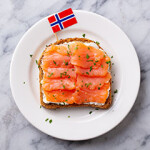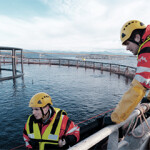UK issues economic sanctions against Russia, fish included in new import tariffs

The United Kingdom has announced a ban on exports of high-end luxury goods to Russia, while also hitting hundreds of key Russian products with new import tariffs that represent a 35 percentage point hike on current rates.
Russian whitefish is one of the products affected by the tariff increases, as is vodka, while the export ban will likely affect luxury vehicles, high-end fashion, and works of art.
In a press release issued on 15 March, 2022, the U.K. government said its new measures “will cause maximum harm to Putin’s war machine while minimizing the impact on U.K. businesses as G7 leaders unite to unleash a fresh wave of economic sanctions on Moscow.”
The export ban will come into force shortly, it said, without giving an exact date.
“The U.K. stands shoulder to shoulder with our international partners in our determination to punish Putin for his barbaric actions in Ukraine, and we will continue our work to starve his regime of the funds that enable him to carry them out,” International Trade Secretary Anne-Marie Trevelyan said.
In addition to whitefish and vodka, imported products selected by the United Kingdom to inflict maximum damage on the Russian economy include metals, cereals, oil seeds and machinery. It is estimated that the list represents goods worth a total GBP 900 million (USD 1.2 billion, EUR 1.1 billion).
“Our new tariffs will further isolate the Russian economy from global trade, ensuring it does not benefit from the rules-based international system it does not respect,” Chancellor of the Exchequer Rishi Sunak. “These tariffs build on the U.K.’s existing work to starve Russia’s access to international finance, sanction Putin’s cronies and exert maximum economic pressure on his regime.”
The United Kingdom is heavily reliant on imported whitefish to meet demand, sourcing 432,000 metric tons (MT) with a value of almost GBP 800 million (USD 1 billion, EUR 952.1 million) in 2020, according to according to U.K. public body Seafish, the United Kingdom imported 48,000 metric tons (MT) of whitefish directly from Russia in 2020. A considerable proportion of Chinese whitefish imports was also of Russian origin.
At the same time, Russia accounts for over 40 percent of the world’s whitefish production, including 60 percent of the Alaskan pollock, 30 percent of the Atlantic cod supply, and 25 percent of the haddock.
Direct imports to the U.K. market from Russia amounted to 48,000 MT in 2020, while a considerable portion of Chinese whitefish imports into the country (143,000 MT in 2020) was also of Russian origin. It is also likely that some Norwegian, Polish, and German imports into the U.K. market included Russian products, Seafish said in a press release.
“An exact figure is difficult to calculate but we estimate that it will be more than 30 percent,” it said, adding that some businesses and some parts of the supply chain will be more affected than others.
The challenge, Seafish said, is that there is no obvious or quick substitute for the product if it is no longer available to U.K. businesses, and nor is there an option to increase supply. Furthermore, where product is available, the United Kingdom will be competing on the global market, it said.
“Any changes to the available supply will impact production; the products we expect to find in the supermarket freezer cabinet will either no longer be available or they will see significant price increases. Estimates are that raw-material prices will increase at least by 20 to 30 percent as a result of current events. Margins are already tight across the processing sector and many businesses (especially smaller businesses) will not be able to absorb these costs.”
Seafish said while no formal sanctions or trade measures against seafood have been put in place, the current global situation is expected to result in “significant disruption” to U.K. seafood processing, with rising fuel prices, delays to supplies, and competition for product.
“This inevitably will result in cost increases and are expected to translate into higher food prices for consumers. It is impossible to predict how much prices will rise by, but they could be as high as 20 to 30 percent,” it said.
“U.K. seafood businesses understand how difficult this will be, particularly for low-income families who are already struggling, so there is a great deal of work happening by businesses to find ways to minimize the impact this will have on consumers.”
Seafish said that it is working with the seafood sector, and will support businesses with any changes they may want to make to their supply chains in light of the situation.
Photo courtesy of Matthew Ashmore/Shutterstock






Share